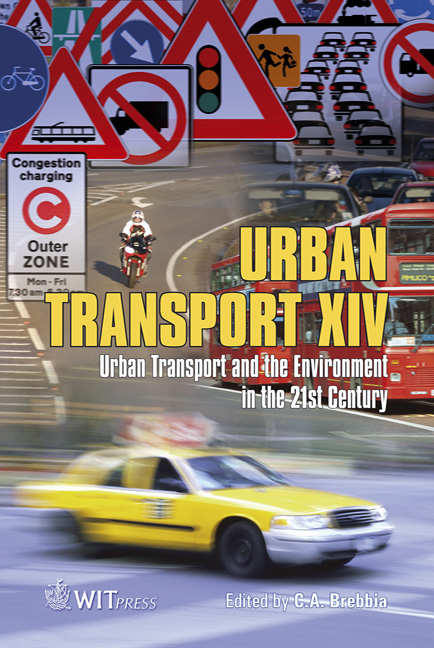Use Of Railways For Urban Passenger Transport
Price
Free (open access)
Transaction
Volume
101
Pages
9
Page Range
243 - 251
Published
2008
Size
403 kb
Paper DOI
10.2495/UT080241
Copyright
WIT Press
Author(s)
B. Abramović, M. Petrović & J. Blašković Zavada
Abstract
For many years the whole world has had problems with the issue of traffic congestion that results from the usage of road traffic, especially the traffic of passenger cars. The average occupancy of passenger cars amounts to 1.4 persons per vehicle, thus making this selection of the transport means the least economical regarding fuel consumption, occupancy of traffic areas and negative impact on the environment. The solution to the problem lies in a different traffic policy that will stimulate the usage of public urban passenger transit. Apart from bus and tram transport the public transit in the City of Zagreb also uses rail transport. The railway line that passes through the City of Zagreb is located on the route of the Pan-European corridor X and the b branch of Corridor V. For the needs of this paper, the section of the line in relation to Zagreb Main Railway Station–Sesvete is of interest, because the Scientific–Academic campus Borongaj (ZUK Borongaj) is located south of the mentioned section. In October 2007 three faculties moved to ZUK Borongaj and the moving of five more faculties as well as the construction of a student hostel are expected there in the near future. This leads to the conclusion that there will be an increase in the number of people who will gravitate to the area of ZUK Borongaj and therefore the new gravitation area will have to be studied. Apart from the technical-passenger station, which is next to ZUK Borongaj, a new stop for urban–suburban passenger transport is planned. It is therefore necessary to make certain modifications in the mentioned section of the railway line regarding the location and the number of stops. Since the move to ZUK Borongaj has been planned in three phases, each of these requires an estimate of the number of students, teachers and other staff members who will arrive at the Campus. It is also necessary to use surveys to make a distribution to certain transport modes. Furthermore, each phase will require an analysis of the usage of the rail transport means capacity and based on this a proposal for a new organization of train operation. Keywords: urban transport, railway transport, catchment area, distribution.
Keywords
urban transport, railway transport, catchment area, distribution.





